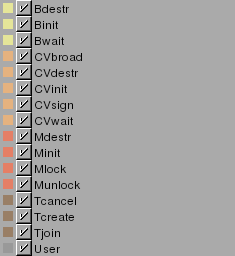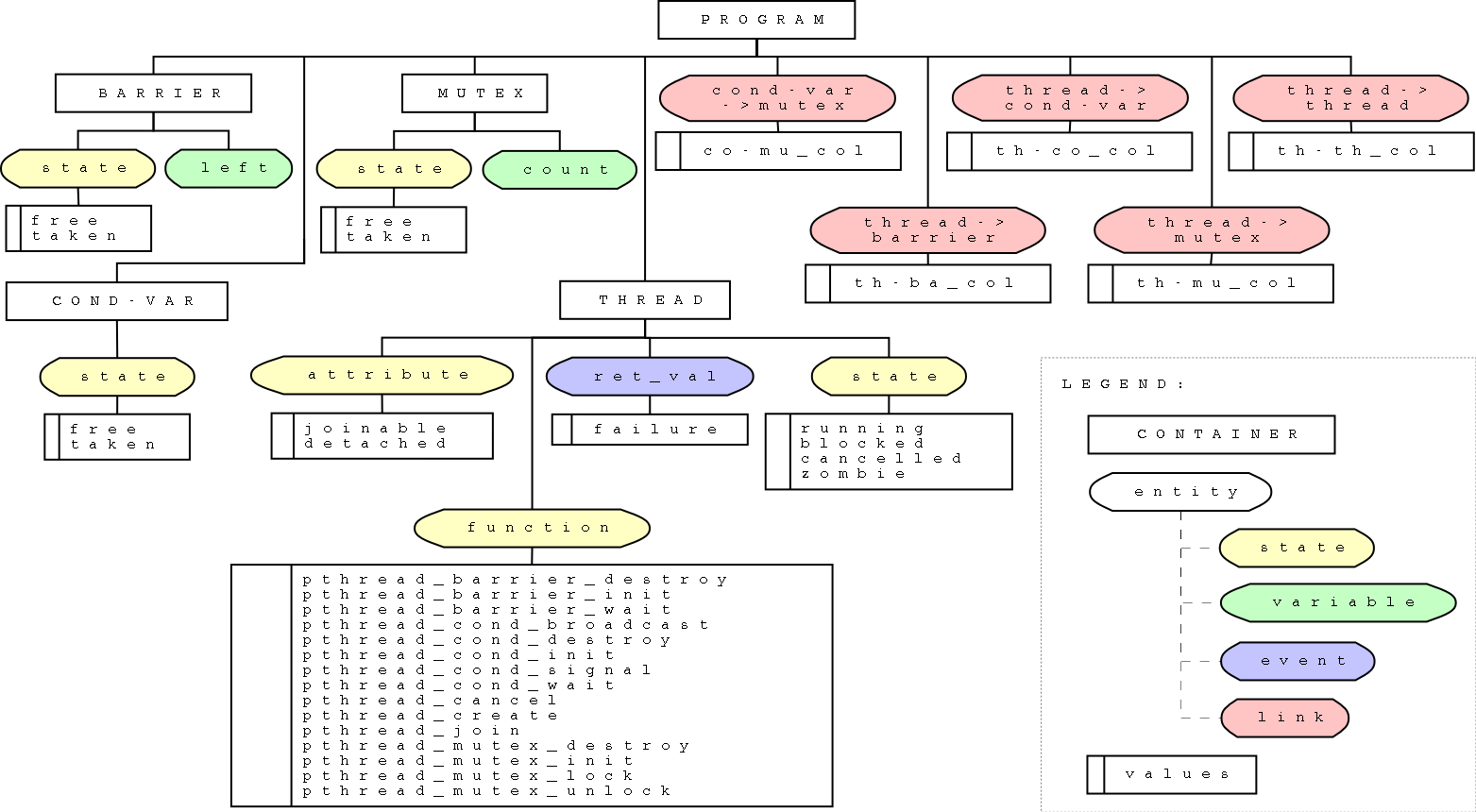|
An event is represented as a red pin.

A state is represented as a rectangle
which color varies according to its value.
The meaning of the color can also be displayed as letters.
Capital letters identify the container type
(B = barrier, M = mutex, T = thread, CV = conditionnal variable).
Small letters identify the state
(f = free, t = taken, r = running, b = blocked, c = cancelled, z = zombie,
j = joinable, d = detached).

A link is represented as a vertical arrow.

A variable is represented as a graph.

Here are the colors of barriers' states (free, taken).

Here are the colors of conditionnal variables' states (free, taken).

Here are the colors of mutexes' states (free, taken).

Here are the colors of threads' attributes (detached, joinable).

The color of a thread function depends
on the object concerned (barrier, conditionnal variable, mutex, thread).

Here are the colors of thread's states
(blocked, cancelled, running, zombie).

|


 Click to view
Click to view








